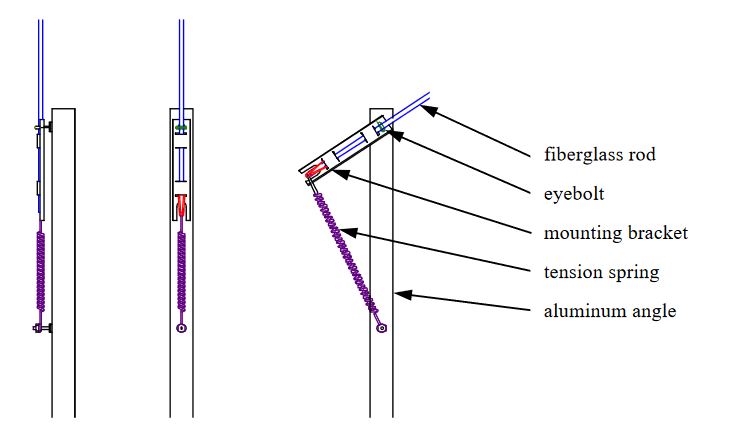ABSTRACT
Interest in and deployment of wireless monitoring systems is increasing in many diverse environments, including row-crop agricultural fields. While many studies have been undertaken to evaluate various aspects of wireless monitoring and networking, such as electronic hardware components, data-collection procedures, power management, and communication protocols, little information related to physical deployment issues has been reported.
To achieve acceptable wireless transmission capability, the radio/antenna must be positioned properly relative to the ground surface or crop canopy to minimize degradation of the radio signal, usually requiring the mounting of the radio/antenna above the canopy. This results in the presence of obstacles to normal agricultural equipment traffic and production operations and potential damage to the wireless monitoring system.
A simple and rugged radio/antenna mounting system was designed which could be subjected to encounters with agricultural equipment with out suffering physical damage. The mounting system was deployed and tested, and operated successfully following repeated encounters with various agricultural machines and implements. The radio/antenna mount is simple and inexpensive to fabricate using locally available components.
DESIGN OF THE MOUNTING SYSTEM

Figure 1. Side (Left) and front (Middle) views of the radio/antenna mounting system in the normal, unflexed orientation, and flexed, under strain (Right)
A diagram of the radio/antenna mount which was developed is shown in Figure 1. The mount was designed to support a tall mast, with a small radio or radio antenna, attached to the top of the mast. Under normal conditions, the mast would remain in a vertical orientation to provide sufficient height above the ground surface or crop canopy. If agricultural equipment, such as a tractor pulling an implement, were operating in the field and encountered the radio mast, the mast would pivot and pass under the implement.
DEPLOYMENT AND TESTING

Figure 2 . Close-up (Left) and complete view (Right) of field datalogger and radio/antenna mount installed in a soybean field
The monitoring and wireless equipment were installed in a soybean field, with a typical soil-moisture monitoring installation shown in Figure 2. The aluminum angle stock was driven into the soil approximately 30 cm deep, in-line with the soybean plants to minimize exposure to agricultural implements and to avoid tract or and implement wheel-traffic. Installing to a depth of 30 cm ensured that the remaining 30 cm of aluminum angle were below the minimum level of any implements likely to be used in the field.
CONCLUSIONS
Deployment of wireless monitoring systems is increasing in many diverse environments, including row-crop agricultural fields. To achieve acceptable wireless transmission capability, the radio/antenna must be positioned properly relative to the ground surface or crop canopy to minimize degradation of the radio signal. This requires the mounting of the radio/antenna above the canopy, resulting in potential obstacles to normal agricultural equipment and production operations and damage to the wireless monitoring system.
A simple and rugged radio/antenna mounting system was designed which could be subjected to encounters with agricultural equipment and pass under the equipment without suffering physical damage. The mounting system was deployed and tested, and operated successfully following repeated encounters with various agricultural machines and implements. The radio/antenna mount is simple and inexpensive to fabricate using locally available components. While designed to support radio equipment in a wireless network, it could also be used simply as a marker/flag to identify locations in an agricultural field which could be subjected to vehicular traffic or field operations.
Author: Daniel K. Fisher
>> 60+ Antenna Communication Projects for Engineering Students
>> 60+ Final Year Projects on Microstrip Antenna Design for Engineering Students